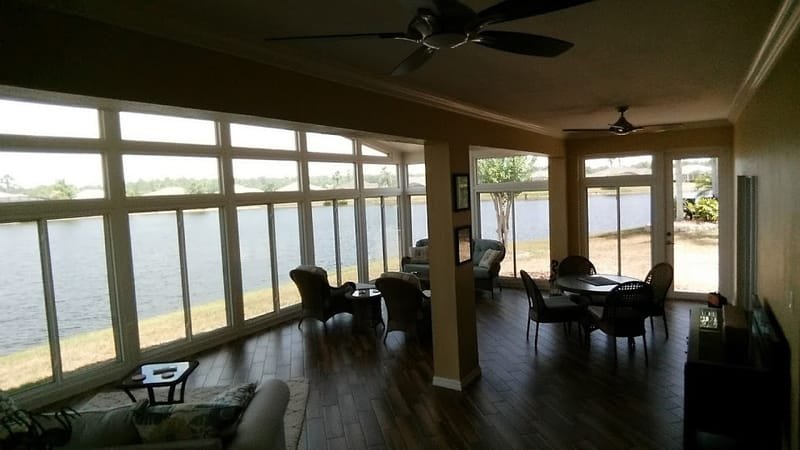Sunrooms

A sunroom is an excellent addition to many homes because it serves as an additional space that is typically popular for relaxation and family gatherings. It is usually casual and comfortable and lets the outdoors in without letting in as much heat or any of the irritating insects. However, before you sign up with a contractor to have a sunroom or enclosed patio built, you will want to consider each of these five ideas carefully so that you will be happy with your finished space.
Consider Its Use
First, you will want to consider how you plan on using your room. And what category room is best for your needs.
Category I: A thermally isolated sunroom with walls that are open or enclosed with insect screening or 0.5 mm (20 mil) maximum thickness plastic film. The space is non-habitable and unconditioned.
Category II: A thermally isolated sunroom with enclosed walls. The openings are enclosed with translucent or transparent plastic or glass. The space is non-habitable and unconditioned.
Category III: A thermally isolated sunroom with enclosed walls. The openings are enclosed with translucent or transparent plastic or glass. The sunroom fenestration complies with additional requirements for air infiltration resistance and water penetration resistance. The space is non-habitable and unconditioned.
Category IV: A thermally isolated sunroom with enclosed walls. The sunroom is designed to be heated or cooled by a separate temperature control or system and is thermally isolated from the primary structure. The sunroom fenestration complies with additional requirements for water penetration resistance, air infiltration resistance and thermal performance. The space is non-habitable and conditioned.
Category V: A sunroom with enclosed walls. The sunroom is designed to be heated or cooled and is open to the main structure. The sunroom fenestration complies with additional requirements for water penetration resistance, air infiltration resistance and thermal performance. The space is habitable and conditioned.
Consider Its Placement
Second, you will want to consider where the sunroom will join your house. There are setback limitations on the space that can be built upon. Egress windows cannot be covered by the sunroom. And the architectural features of your home should be taken into consideration while planning the build.
Consider the Temperature
Most sunrooms are made mainly from glass, which can help bring in heat from the sun. During the summer, your sunroom may become too hot without some form of temperature control. You may want to add an air conditioner for additional heat and cooling, windows that open for airflow, choose tinting, dual pane windows and add blinds to keep out heat.
Consider the View
Windows will be a huge part of your sunroom. However, you will want to choose how far down you want your windows to run. Some prefer windows that stop halfway to the floor while others prefer a solid glass look, which makes it feel as if you are right outdoors. Summer rooms will merely need screens to keep out the bugs while letting in the breeze.
Consider It an Extension of Your Home
Because your sunroom is basically an extension of your home, you will want to treat it and decorate it as such. Consider outdoor furnishings and rugs that look upscale, and add decor, lighting and plants for a homey feel. If you would prefer to stay away from rugs, choose a beautiful tile or brick floor instead.
When designed and built carefully, sunrooms and enclosed patios can be both comfortable and usable. Whether you use it as your daily relaxation spot or as a party gathering area, you can rest assured that your new spot will astound you with its multifunctional atmosphere. By choosing a quality contractor and premier doors and windows, you will also be able to feel safe, secure and protected in this wonderful extension of your home.